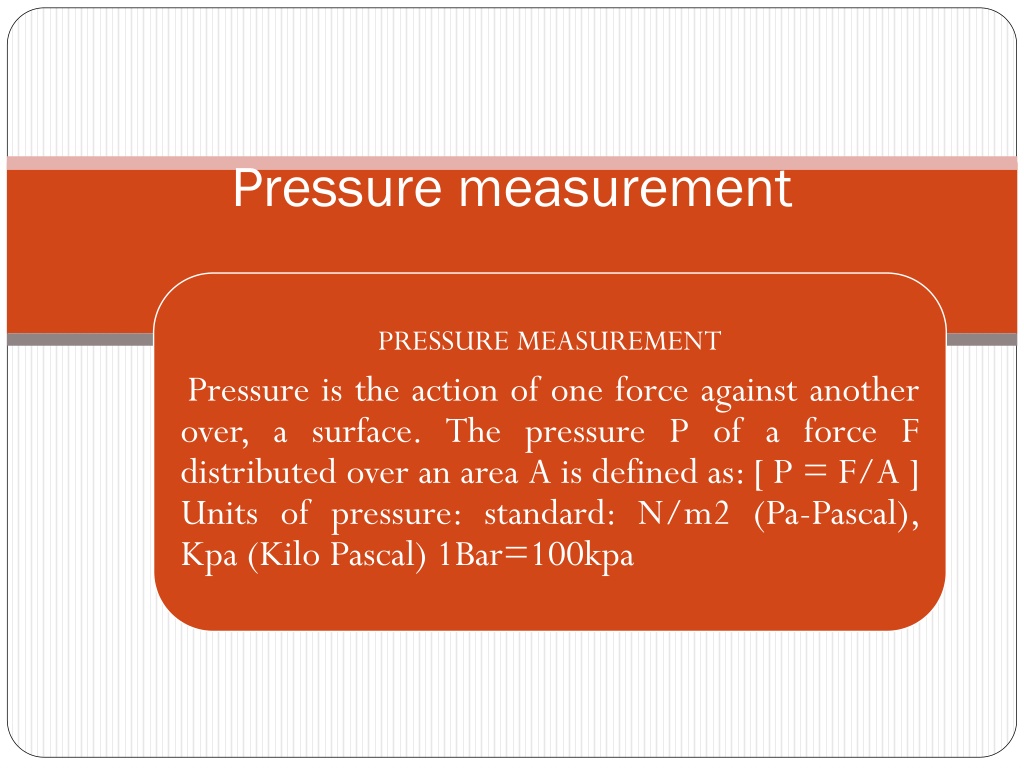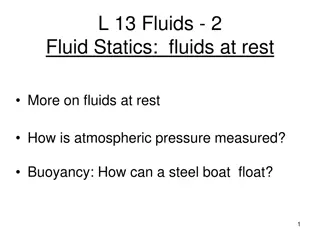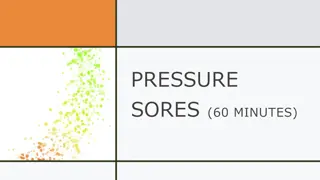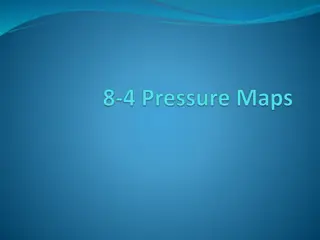Understanding Pressure Measurement Techniques
Pressure measurement involves the action of force over a surface. Various sensing elements such as Bourdon tubes, diaphragms, and bellows are utilized for measuring pressure. Bellows sensors are flexible cylindrical enclosures, while Bourdon gauges use coiled tubes for pressure measurement. Different types of Bourdon tubes have varying pressure ranges suitable for different environments. Pressure measurements help in monitoring absolute, gauge, vacuum, and differential pressures.
Download Presentation

Please find below an Image/Link to download the presentation.
The content on the website is provided AS IS for your information and personal use only. It may not be sold, licensed, or shared on other websites without obtaining consent from the author. Download presentation by click this link. If you encounter any issues during the download, it is possible that the publisher has removed the file from their server.
E N D
Presentation Transcript
Pressure measurement PRESSURE MEASUREMENT Pressure is the action of one force against another over, a surface. The pressure P of a force F distributed over an area A is defined as:[ P = F/A ] Units of pressure: standard: N/m2 (Pa-Pascal), Kpa (Kilo Pascal) 1Bar=100kpa
SENSING ELEMENTS The main types of sensing elements are Bourdon tubes diaphragms bellows . The basic pressure of sensing element can be configured as a C-shaped Bourdon tube (A); a helical Bourdon tube (B); flat diaphragm (C); a convoluted diaphragm (D); a capsule (E);or a set of bellows (F).
Pressure Measurements Bellows Bellows Bourdon Tube BELLOWS Bellows sensor is an axially flexible, cylindrical enclosure with folded sides. When pressure is applied through an opening, the closed end extends axially. Bellows elements can measure absolute pressure, gauge pressure, vacuum, or differential pressure. BOURDONTUBE A Bourdon gauge uses a coiled tube, which, as it expands due to pressure increase causes a rotation of an arm connected to the tube. bourdon are often used in harsh environments and high pressures, but can also be used for very low pressures; the response time however, is slower than the bellows or diaphragm. C-type bourdon psi Range as low as 0 - 15 psi up to 0-1500 Helical bourdon Range as low as 0 - 200 psi up to 0 6000 psi Spiral bourdon Range as low as 0-10 psi up to 0-100,000 psi.























